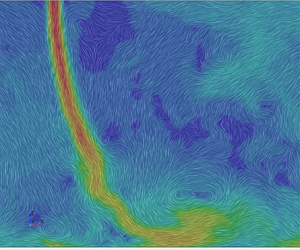Article contents
Immersed body motion: near-bottom added mass effects
Published online by Cambridge University Press: 30 March 2022
Abstract

The presence of a solid boundary can cause a substantial increase in added mass due to a solid body movement in the fluid. If the body is very close to the boundary, the added mass increases at an even greater rate. The added mass can be of considerable importance in many dams and hydropower, water/ocean, civil and mechanical engineering problems; furthermore, it has an important effect on the dynamics of the vibrating body in the fluid. The principal aim of this paper is to define a novel model to properly evaluate the near-bottom effects of the added mass and to investigate the instantaneous pressure field due to a body movement that changes the thickness of a compressible thin fluid film close to a solid boundary. The body movement can be due to the application of an external force according to Newton's law. This phenomenon is studied theoretically in this paper, and a hydrodynamic model able to compute the instantaneous pressure field in the thin fluid film is drawn out. The fluid film thickness variation, producing compression and decompression waves, tends to reduce the mean body displacement due to external forces, but it generates both high-frequency fluctuations in body force and in body displacements. For the first time, this novel study provides the near-bottom added mass and justifies the strong body accelerations measured in the laboratory experiments that have not been evidenced in the theoretical studies in the known literature.
- Type
- JFM Papers
- Information
- Copyright
- © The Author(s), 2022. Published by Cambridge University Press
References
- 2
- Cited by



